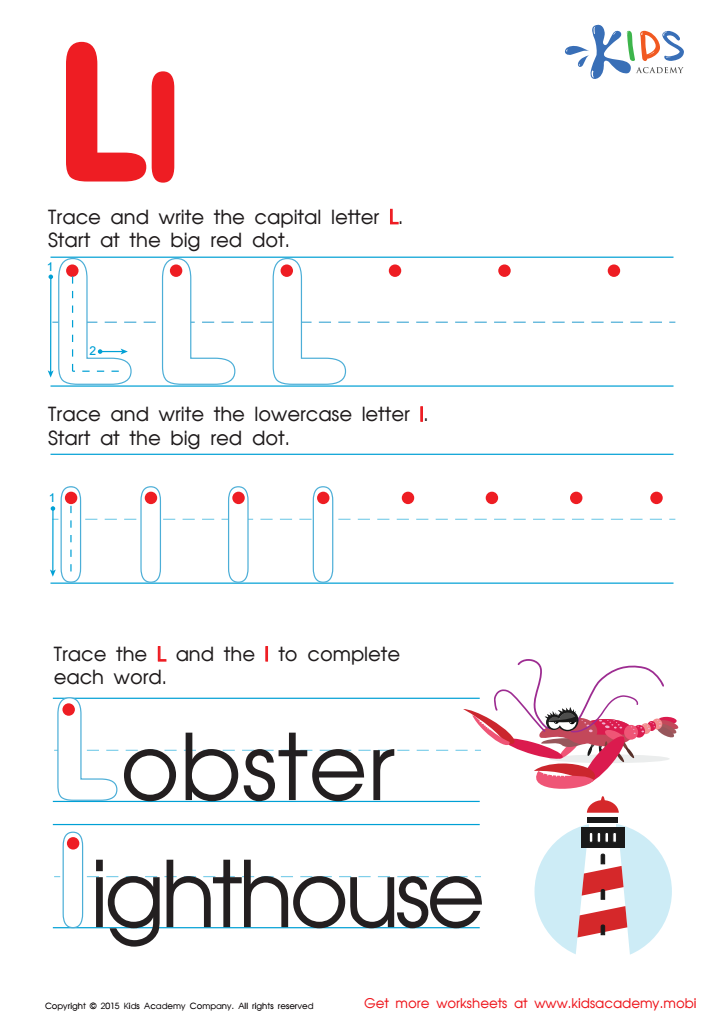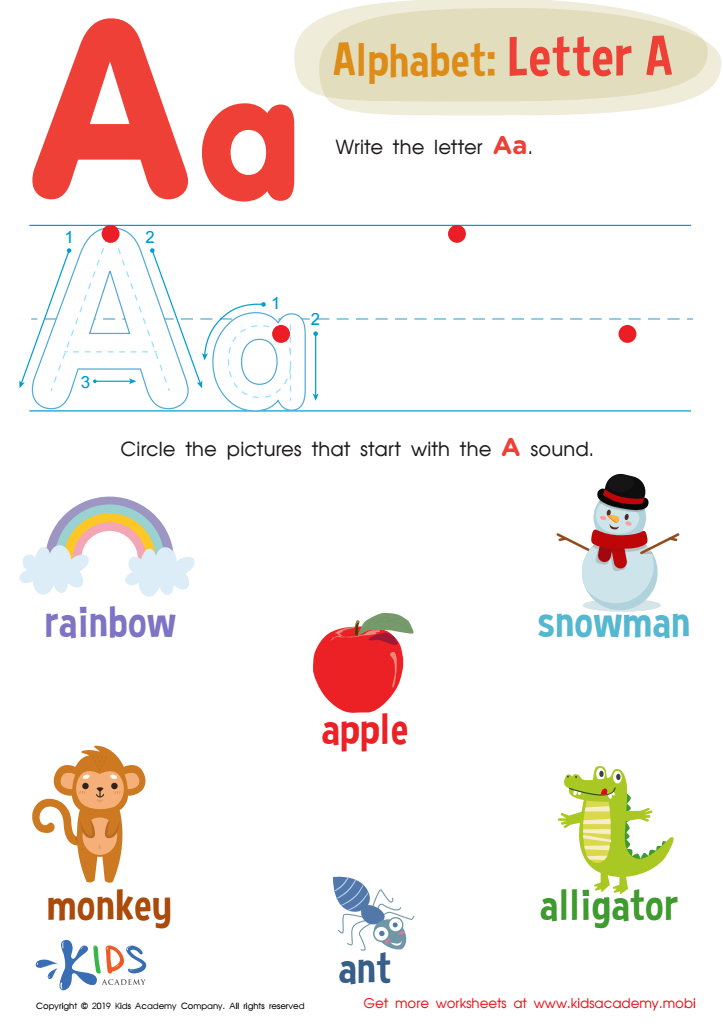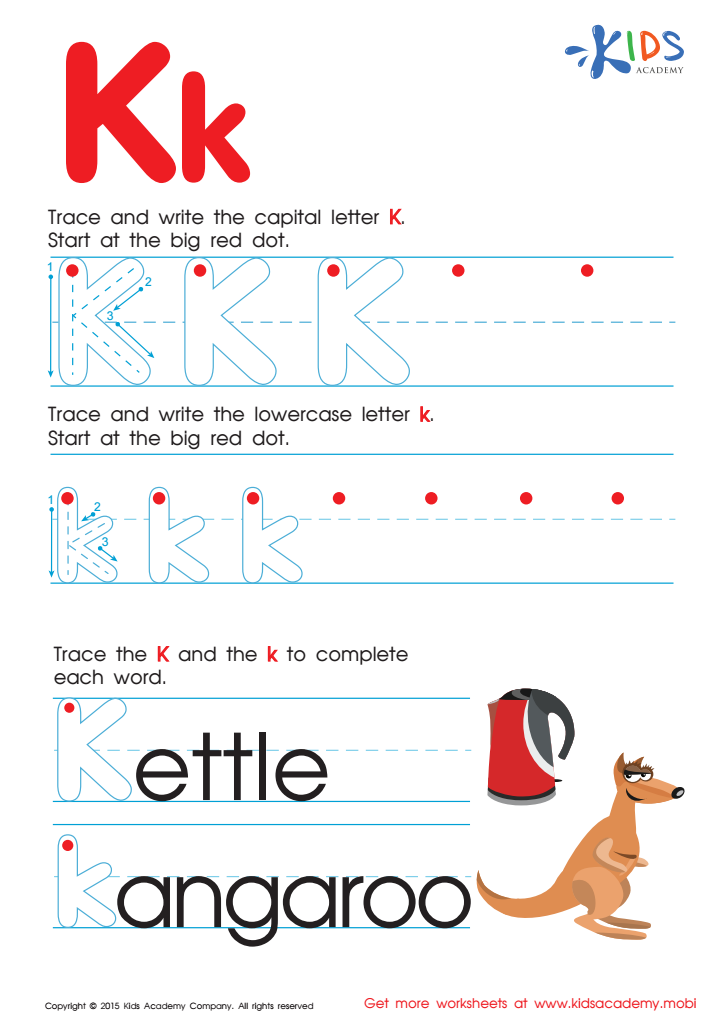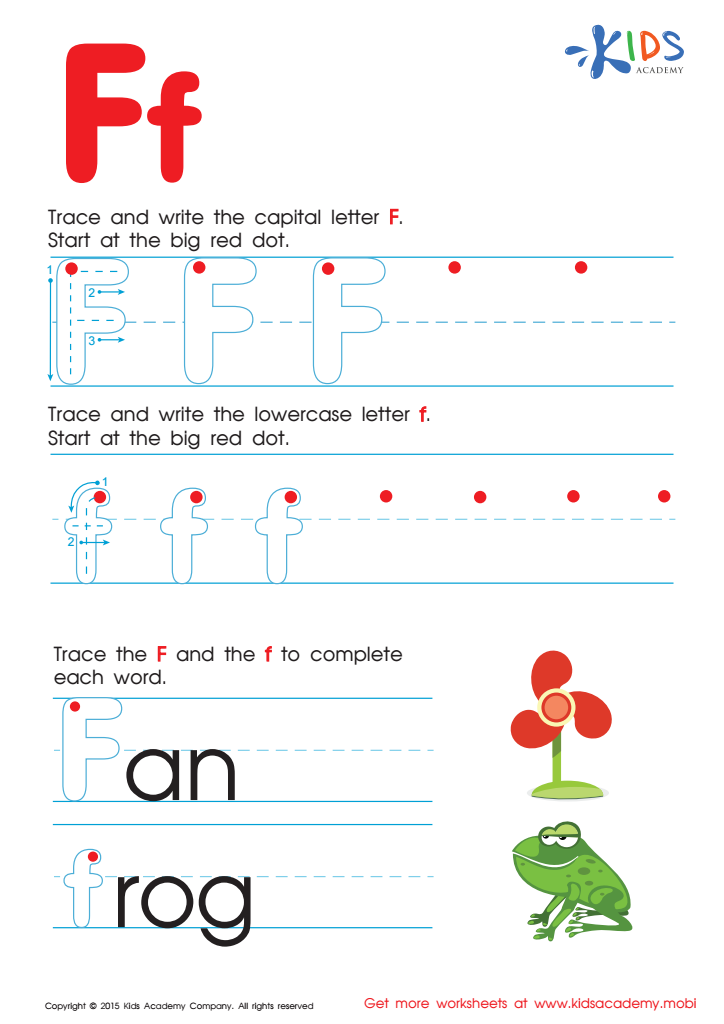Letter recognition Normal Tracing Letters Worksheets for Ages 4-9
9 filtered results
-
From - To
Discover our engaging "Letter Recognition Normal Tracing Letters Worksheets" designed for children ages 4-9. These worksheets are perfect for supporting early literacy skills by helping kids recognize, trace, and craft their understanding of the alphabet. Each worksheet focuses on a specific letter, encouraging fine motor skills development and visual recognition. With a fun and creative approach, your child will gain confidence in their writing as they trace each letter's formation. Ideal for home or classroom use, these worksheets provide an excellent foundation for young learners to master the alphabet while enjoying a hands-on learning experience. Download your worksheets today!


Letter P Tracing Page


Letter Q Tracing Page


Letter H Tracing Page


Letter G Tracing Page


Letter L Tracing Page


Letter A Tracing Worksheet


Letter K Tracing Page


Letter F Tracing Page


Letter D Tracing Page
Letter recognition and tracing are foundational skills in early literacy development for children aged 4-9. Parents and teachers should prioritize these activities because they serve as the building blocks for reading and writing comprehension. Recognizing letters helps children identify different sounds associated with each character, which is crucial for phonics and later decoding skills necessary for reading.
Furthermore, tracing letters strengthens fine motor skills, enhancing hand-eye coordination and control necessary for writing. Children develop muscle memory that aids in forming letters accurately, facilitating smoother handwriting as they progress. Normal tracing letters acclimates kids to various types of letters, including both uppercase and lowercase forms, fostering a comprehensive understanding of the alphabet.
Engaging in letter recognition activities also promotes cognitive development. These exercises encourage critical thinking as children learn to distinguish between different letters, improving their overall recall abilities. In addition, early literacy experiences can boost confidence and foster a love for reading, setting the stage for lifelong learning.
Ultimately, prioritizing letter recognition and tracing not only equips children with essential academic skills but also fosters emotional intelligence by building confidence and a sense of accomplishment in learning to read and write. This early investment pays dividends as students progress through their educational journeys.
 Assign to My Students
Assign to My Students















